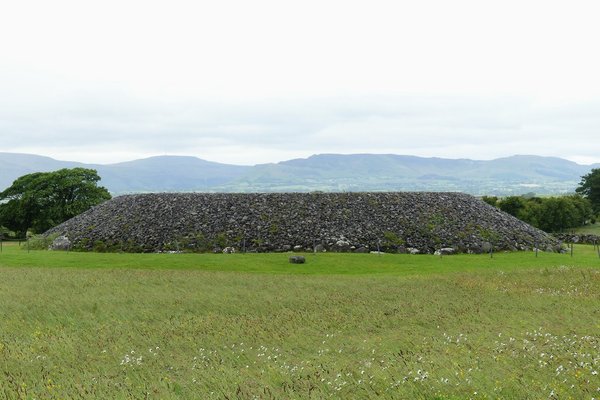Ireland
Passage Tomb Landscape of Sligo
The Passage Tomb Landscape of County Sligo comprises two groups of Neolithic megalithic monuments. They were ritual sites placed consciously in the physical terrain. They date from 3750-2500 BC.
Site Info
Official Information
- Full Name
- The Passage Tomb Landscape of County Sligo (ID: 6635)
- Country
- Ireland
- Status
-
On tentative list 2023
Site history
History of Passage Tomb Landscape of Sligo
- 2023: Added to Tentative List
- Added to tentative list
- Type
- Cultural
- Criteria
Links
- UNESCO
- whc.unesco.org
All Links
UNESCO.org
- whc.unesco.org — whc.unesco.org
Community Information
- Community Category
- Archaeological site: Prehistoric
Travel Information
Recent Connections
News
No news.
Community Reviews
Show full reviews
I know why there's only one review because nobody wants to follow such a detailed explanation of the proposed site and honestly I can't add much more than personal trip info - which is pretty neat to read too, right? :) So here I go with the "do yourself a favor and just skip down to the second review instead" posting.
First of, I only went to the Carrowmore cemetery which is very conveniently situated near Sligo. You can park onsite, pay an entrance fee and get a visitor card (no deposit required maybe they trust me more or it was a slow day). I spoke to the staff quite a bit and it was the first time I heard UNESCO mentioned. They were recently added to the tentative list which I didn't even know because I had my plans for Ireland way before Covid and it was definitely a highlight on the way up to Northern Ireland not to miss one way or another. Being a tentative list was even better I suppose so I can "tick" this off one day eh. You also can play a kid's game of spotting things around the site which keeps you a bit entertained plus I got a postcard as gift - slow day for the staff indeed (I want to add that they are super friendly!). Your first steps will be across the road which one could potentially get without paying but with the honest system they'll assume you paid …
Keep reading 0 comments
During a comprehensive tour around Ireland in June 2022 we gathered that the Eire T List review process might well result in the “Passage Tomb landscape of Co Sligo” being added. We hadn’t specifically included its locations in our plans but were passing through Sligo (County and town) anyway and were able to fit in a specific visit to 1 of the 2 stated “likely” sites at Carrowmore. We accept that this single site visit didn’t perhaps give us a full enough experience of what the complete entry would have to offer but are still not really convinced that the chosen elements justify a separate inscription from that of Bru na Boinne (BnB).
There are 4 clusters of Megalithic “Passage” tombs in Ireland (see this Wiki article). The already inscribed BnB, a cluster at Lochcrew in Co Meath and 2 more close together in Co Sligo – on the Cúil Iorra Peninsula south and west of Sligo town (which includes “Carrowmore”) and another a bit further south on the Bricklieve Hills generally referred to as “Carrowkeel”. The “Sligo Passage Tombs landscape” T List entry covers these last 2. I presume that Lochcrew has been left out as it doesn't fit in with the geographic concentration offered by the 2 Sligo groups?
There are 4 main types of megalithic tombs - Court, Portal, Passage and Wedge. This article describes their differences and periods, particularly in relation to the island of Ireland. The …
Keep reading 0 comments
